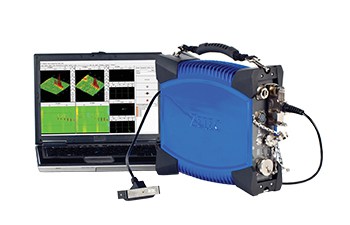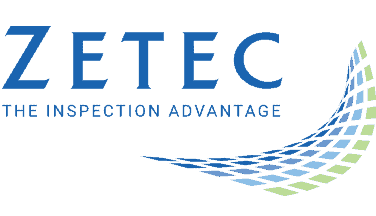Eddy Current Inspection: Advantages and Disadvantages of ECT Technology

Eddy current testing (ECT) can pinpoint minute flaws using sophisticated software and detection probes. Analysts can scan for anomalies on a surface and subsurface level with ease and accuracy—but ECT is not without its limitations, especially when it comes to comprehensive inspections. Compared to ultrasonic testing (UT), for instance, eddy current instruments are capable of subsurface inspections but cannot probe as deeply as UT instruments.
When considering the viability of ECT in the context of a company’s current inspection needs, it’s vital to consider both the advantages and disadvantages of eddy current technology and determine whether one side outweighs the other.
The Disadvantages of ECT Technology
While eddy current technology is at the forefront of cutting-edge nondestructive testing, it is not an all-encompassing solution for every NDT necessity. A primary disadvantage of ECT is that it only works with a current, meaning it cannot be applied to non-conductive materials. It’s also non-conductive with ferromagnetic materials, as ECT equipment is subject to permeability changes on the welds.
Further, ECT current always runs parallel to the surface—meaning that a defect that does not come in direct contact with the current cannot be detected, allowing certain potentially critical flaws to go unnoticed altogether. In such situations, a more thorough inspection technique (such as phased array ultrasonic testing, or PAUT) is needed to pinpoint flaws at various angles and wave beam shapes.
Moreover, ECT is not always equipped to handle large areas, especially those with complicated geometries. Advanced instruments and software can help mitigate these issues, but even with stellar software, inspectors may still struggle to separate the geometry signals from the flaw signals during data analysis. Data analysis may be further complicated by the fact that the signal and the currents are subject to permeability, which can make it especially difficult to distinguish between important and unimportant irregularities. This type of interpretation requires skill and mastery that is usually reserved for seasoned analysts.
However, in spite of these disadvantages, there are also situations in which ECT has a clear advantage over other NDT options.
Eddy Current Testing Advantages
ECT is one of the most versatile forms of NDT testing in terms of portability and flaw detection. The equipment requires minimal setup time and does not require hazardous chemical or radiation use. It is safe, effective, and efficient, capable of detecting even easily-overlooked defects in the form of:
- Cracking
- Corrosion
- Erosion
- Material degradation
- Thickness loss
Additional benefits can be reaped from choosing handheld eddy current instrumentation, which can further improve testing times and increase ease of use.
Heat Exchanger Testing
ECT particularly shines in the area of heat exchanger inspections, where eddy current instruments can detect irregularities within tubing materials such as carbon steel and magnetic alloys. This mechanism reads flaws when the defects disrupt the current flow. Heat exchanger equipment comes with multiplexed frequencies that foster top-notch detection functionality. Moreover, the simultaneous injection features speed up the testing process while enhancing remote field testing.
In addition, high-quality ECT probes allow the analyst to get instant data with a single pass, saving on costs and probe changes in the process. Heat exchanger probes come in bobbin and array form, as well as probes with mixed bobbin/array features.
The array coils within the probe allow analysts to find circumferential flaws, including hidden defects that can lead to costly operational failure if overlooked. For the best results, it’s important to choose probes that have more coverage per coil density, which increases the likelihood of finding hidden degradations.
ECT also shortens inspection times, allowing analysts to get out of hazardous testing zones faster. Bobbin and array are prime combinations, but the key to truly effective ECT is surface array, which is a powerful strategy that reads flaws at a detailed level.
Surface Array Testing for Aerospace and More
Compared to traditional pencil probing, surface array instruments and probes can reduce inspection time by up to 95 percent. Surface array can measure wall thickness and conductivity with incredible precision, and can also be used to measure the conductivity of various alloys and metals, such as aluminum. The wall thickness analysis can determine if an internal or external structure suffers from corrosion or any other kind of aberration that can erode the material.
It’s also highly customizable and versatile, capable of highlighting hard-to-reach areas that other NDT methods cannot properly inspect. It has some of the strongest signal qualities that detect more flaws during the testing phase, including minor material losses. This detection boost helps managers create precise maintenance schedules that address flaws early.
Eddy Current Inspection Advantages and Disadvantages
Despite its drawbacks, the advantages of ECT technology make eddy current testing a vital part of any NDT strategy. Its reliability, flexibility, and above all, the high quality of data that can be obtained more quickly and more easily than with cumbersome and complex traditional NDT methods—like liquid penetrant testing (LPT) and magnetic particle testing (MPT)—make eddy current one of the most efficient and effective tools in an NDT analyst’s toolbox.
Of course, the key to getting the most out of any eddy current testing solution is quality. Equipping analysts with state-of-the-art instrumentation, flexible probes, and advanced software ensures the highest data quality possible, and can even help mitigate many of ECT’s typical shortcomings. This will allow analysts to further streamline inspection processes, conduct more thorough and accurate tests, and detect flaws early enough to successfully prevent them from developing into critical failures that can cost precious time, money, and—in the worst cases—lives.
Zetec is an experienced provider of ECT equipment and software. Contact us today for more information about our innovative nondestructive testing solutions.
Looking for cutting-edge ECT probing options? Click here to learn more about our new SURF-X eddy current array probes.
